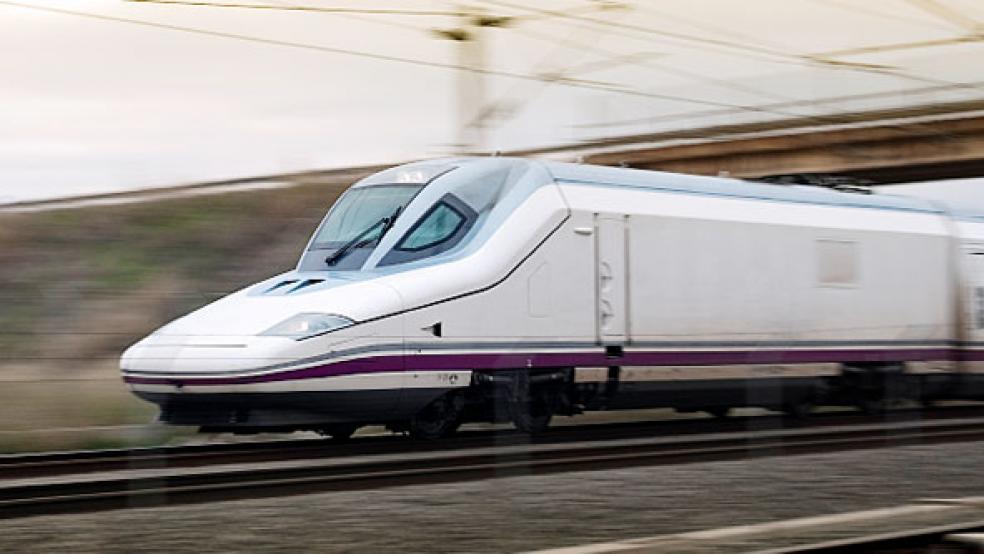Three environmental groups—Earthjustice, the Center for Biological Diversity and Friends of the Earth— notified the Environmental Protection Agency (EPA) this week of their intention to sue to force the release of an “endangerment finding” regarding carbon dioxide emissions from the nation’s airlines. If these groups are successful, such a ruling would pave the way for regulations of carbon emissions from U.S. air travel. The groups say those emissions account for about 11 percent of carbon dioxide pollution from the transportation sector in the United States (by comparison, power generation contributes about 32 percent of total U.S. greenhouse gas emissions).
According to the Notice of Intent released by the groups, the initial legal wrangling dates back to 2007, when the groups petitioned the EPA to issue a finding that greenhouse gas emissions for airplane engines contributed to air pollution, and that such pollution “may reasonably be anticipated to endanger public health and welfare.” The EPA did not respond, leading to the first lawsuit in 2010. Two years later, the EPA said it would begin work on such an endangerment finding, and that it would take a further two years to complete. That self-declared deadline has come and gone; hence the threat of impending legal action.
That the EPA might release an endangerment finding is not that controversial. After all, the underlying argument behind the EPA’s recently established power plant rules is that carbon pollution is harmful; extending that finding to the carbon produced from the airline industry is hardly a logical or scientific stretch.
The challenge would be how to go about mitigating the harm.
Controlling Airline Carbon
The pursuit of an endangerment ruling from the EPA seems to be an attempt to redress what many greens saw as one of President Obama’s few missteps on climate policy.
As part of its Emissions Trading Scheme, the European Union, starting in 2012, planned to require that airlines flying into or through its airspace would have to purchase carbon offsets. Airlines not located in the European Union cried foul because the original proposal would have covered emissions across the totality of the trip. Congress responded with a law, which President Obama signed, excluding U.S. carriers from the offset plan. Faced with such resistance, the EU suspended those requirements for foreign carriers until 2016, to allow time for a market mechanism to cover all air travel.
The upshot of this regulatory back-and-forth is that no one except the European Union has a set-in-stone methodology for mitigating carbon emissions by airlines. Unlike the proposed rules regarding U.S. power plants, which require actions by individual states, regulation of airlines would have to be national in nature. If the extension of the Emissions Trading Scheme here is not viable or effective, other alternatives will be needed either to ensure air travel is more efficient, or to depress demand for it.
Tailoring a U.S. Plan
One alternative for reducing carbon emissions worth pursuing in the U. S. would be assessing a small fee on domestic airline travel, and using the revenue to expand high-speed rail. By promoting and improving high-speed rail, this would make a less-carbon-intensive means of travel available and more affordable to more Americans.
Such a fee could be weighted to discourage short-haul air travel, particularly flights shorter than 300 miles. According to numbers from the Environmental Protection Agency, those flights are nearly twice as carbon-intensive as intercity rail, producing 0.275 kg of CO2 per passenger mile, versus 0.144 kg per passenger mile for the equivalent train trip. (Longer flights are less carbon intensive because take-offs and landings, which burn the greatest amount of fuel, are a lesser proportion of the overall trip).
The short-haul category of flights includes such popular routes as Houston-Dallas and Los Angeles-Las Vegas — routes that are currently not well-served by rail infrastructure.
If a $15 carbon fee applied to every passenger ticket on a flight less than 400 miles (the Department of Transportation’s definition of “short-haul”), the revenue raised for high-speed rail would exceed $3 billion per year. Given the construction cost of high-speed lines in other Western countries (California’s rail debacle notwithstanding), that fee alone would fund about 75 miles of construction every year.
Perhaps more importantly, the prospect of guaranteed revenues from the air-travel tax would have the potential to leverage significant additional investment from outside sources both public and private.
By these measures, this fee would be a triple win. The EPA would promote economic efficiency and fulfill an important legal requirement without trying to drag the U.S. into a complicated international cap-and-trade framework. The short-haul tax would also set-up an alternative revenue stream for much needed infrastructure investment. And the resulting pivot to high-speed rail would contribute modestly to reducing one source of carbon pollution in the U.S.
Jacob Anbinder and Neil Bhatiya are Policy Associates at The Century Foundation, a progressive nonpartisan think tank located in New York City.



